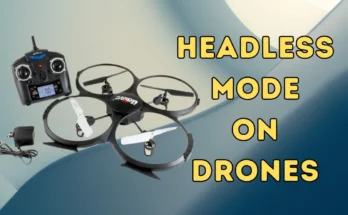As technology changes quickly, drone geofencing have become commonplace, not just among hobbyists but also in business and environmental settings. That being said, great technology comes with great responsibility, especially when it comes to flying. That’s where drone geofencing comes in. It’s a virtual line in the sky that helps keep drones in legal and safe areas. Let’s look into this cool technology and explain it in simple terms.
What is Drone Geofencing?

Think about a fence that you can’t see but your drone can. This fence is not made of wire or wood. Instead, it is made of GPS data and addresses. Your drone will know it’s time to stop, turn around, or land when it gets close to this fence. To sum up, drone geofencing is a technological answer meant to keep drones from flying into restricted areas like national parks, military sites, or airports.
How Does Drone Geofencing Work?

A drone geofencing is made possible by GPS, software programs, and sometimes an internet connection. Drones use GPS to figure out where they are in the world as soon as they are turned on. The software on the drone has a plan of no-fly zones that are based on these locations. The geofencing system will kick in if your drone tries to enter one of these zones. The drone will either not go into the area or will do something pre-programmed, like land or return to the user.
Why is Drone Geofencing Important?
We can’t say enough good things about drone geofencing. All of it has to do with safety, privacy, and security. We can avoid crashes involving manned aircraft, protect wildlife in national parks, and make sure drones don’t accidentally enter limited areas by keeping them out of those areas. It’s an important part of making sure that drones can fly safely in our skies.
The Benefits of Drone Geofencing

Drone geofencing comes with a plethora of benefits:
• Better safety: Drones are less likely to crash into human planes, people, or animals that are easily hurt.
• Protects privacy: It keeps drones from flying over private property or sensitive places where privacy is important.
• Regulatory Compliance: It helps drone users follow local and foreign rules about drones so they don’t get fined or punished.
• Safety: Keeping drones out of restricted places makes national and local safety steps stronger.
The Challenges of Drone Geofencing
Even though drone geofencing sounds like the best option, it does have some problems:
• Accuracy: GPS isn’t always correct, and things in the surroundings can make it harder for a drone to find its exact location.
• Dynamic Airspace: When there are temporary no-fly zones, like during an event, operators have to keep their geofencing data up to date.
• Technical Limitations: Some drones, especially older or simpler ones, don’t have geofencing built in.
• Privacy Issues: Using geofencing for safety purposes can be risky if it also collects information about people’s moves and locations without their knowledge.
Future of Drone Geofencing

When it comes to drone geofencing, the future is just as fluid as the technology. We’re looking at more advanced systems that can update no-fly zones on the fly, GPS that works better, and even systems that work with other technologies, like artificial intelligence (AI), to help drones make better decisions when they come across geofenced areas.
As drone technology improves, so will geofencing. This includes more accurate border definitions, better reliability in a variety of environmental conditions, and better user interfaces that make it easier for drone operators to handle geofencing settings.
Geofencing could be used with Unmanned Traffic Management (UTM) systems, which is an interesting idea.
These systems are meant to handle drone traffic in cities and other complicated places where regular air traffic control can’t go. When geofencing and UTM systems work together, they can make sure that drones stay away from restricted areas and fly along safe routes that keep crashes to a minimum and make good use of airspace.
In addition, geofencing will be very important for compliance as rules about drones continue to change. This means that companies that make drones and software makers will probably have to add more advanced geofencing technologies to their goods. This will make drones safer and more legal right out of the box.
For geofencing to fully work, though, there needs to be agreement around the world on rules for drones and geofencing. This covers not only the technical parts, but also privacy, data safety, and making sure that drone rules are followed across borders. To make a world where drones can be used safely, quickly, and ethically, governments, international aviation groups, drone makers, and tech companies will need to work together.
Conclusion
In order for drones to safely fly in international skies, drone geofencing is a very important step forward. Geographical fence lowers risks, safeguards privacy, and makes sure safety by putting up virtual walls that drones can’t get through. As technology improves, drone geofencing will become even more useful. This will make aerial activities safer and more reliable in many situations. The hard part is fixing the problems and making sure that as drones become even more common, they do so in a way that is safe, doesn’t invade people’s privacy, and works well with human society and the environment.
Looking to the future, we can’t stress enough how important it is for drone geofencing to keep getting better, being regulated, and working together. That’s not all. It’s also about using drones to their fullest potential to help people while protecting their rights and keeping towns and individuals safe around the world.




